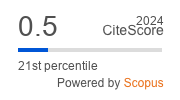Comparative evaluation of pre- and postoperative administration of citicoline: clinical outcomes and the volume of ischemic brain damage after meningioma removal
https://doi.org/10.47093/22187332.2019.4.12-20
Abstract
In the experimental model of cerebral ischemia, citicoline has shown greater effectiveness with its preventive use compared with therapeutic one.
Aim. To study the main clinical outcomes and the dynamics of morphometric indicators of ischemic brain damage according to computed tomography (CT) data in patients with meningiomas of the skull base in the postoperative period against the background of prophylactic and therapeutic administration of citicoline.
Materials and methods. The study included 53 patients aged 40 to 69 years with the skull base meningiomas. The first (control) group (n=17) and the third group, in which citicoline was administered in the postoperative period for 7–21 days at a dose of 1000 mg 2 times a day intravenously (n=25), were formed retrospectively. The second group (n=11), in which citicoline was administered prophylactically 1.5–2.5 hours before surgery at a dose of 2000 mg intravenously, was formed prospectively. We evaluated the main clinical outcomes and CT morphometry data.
Results. The average time spent in the intensive care unit was minimal in the second group: 9.6±3.2 days vs 17.6±3.7 days in the control (p=0.049). Postoperative mortality was 24% in the control group, 9% in the second group, and 20% in the third group. The survival time in the first group was less than 21 days, over 21 days in the second and third groups. The groups did not differ in neurological outcomes and overall in-hospital stay. The average volume of ischemic brain damage on the first day after surgery in the second group was less than in the control group, and amounted to 111.7±15.2 cm3 against 151.3±17.1 cm3, respectively (p=0.044).
Conclusion. The prophylactic administration of citicoline before a tumor removal operation may have effective potential for reducing the severity and prevalence of ischemic cerebral edema. Further randomized clinical trials are needed.
About the Authors
G. Z. SufianovaRussian Federation
Galina Z. Sufianova, DMSc, Professor, Нead of the Pharmacology Department
54 Odesskaya str., Tyumen, 625023
Tel.: +7 (3452) 29-37-07
A. G. Shapkin
Russian Federation
Andrei G. Shapkin, Ph.D. in Medicine, neurosurgeon, Federal Center for Neurosurgery, Associate Professor at the Department of Pharmacology, Tyumen State Medical University
Tyumen
A. A. Sufianov
Russian Federation
Albert A. Sufianov, DMSc, Professor, Chief of the Federal Center of Neurosurgery, Head of the Neurosurgery Department Sechenov First Moscow State Medical University
Tyumen, Moscow
M. S. Khlеstkina
Russian Federation
Maria S. Khlеstkina, Assistant Professor at the Department of Pharmacology
Tyumen
R. A. Sufianov
Russian Federation
Rinat A. Sufianov, Assistant Professor at the Department of Neurosurgery
Moscow
A. M. Mashkin
Russian Federation
Andrei M. Mashkin, DMSc, Professor, Deputy Chief, Federal Center of Neurosurgery; professor at the Department of Neurosurgery, Sechenov First Moscow State Medical University
Tyumen, Moscow
References
1. Sufianova G.Z., Shapkin A.G. Povrezhdenie nervnoi tkani: mekhanizmy, modeli, metody otsenki. / Damage of nervous tissue: mechanisms, models, assessment methods. Moscow.: RAMS Publishing House; 2014, 285p. ISBN: 978-5-7901-0139-7 [In Russian]
2. Gusev E.I., Skvortsova V.I. Neiroprotektivnaia terapiia ishemicheskogo insul'ta. Nervnye bolezni. / Neuroprotective therapy of ischemic stroke. Nervous diseases. 2002; 1: 3-7 [In Russian]
3. Shetova I.M., Shamalov N.A., Botsina A.Iu. Ispol'zovanie tsitikolina v ostrom periode tserebral'nogo insul'ta. Zhurnal nevrologii i psikhiatrii imeni S.S. Korsakova / The use of citicoline in the acute cerebral stroke. S.S. Korsakov Journal of Neurology and Psychiatry. 2009; 109 (12 Suppl 2): 51-4 [In Russian]
4. Secades J.J. Citicoline: pharmacological and clinical review, 2016 update. Rev Neurol. 2016; 23, 63 (S03): 1-73. PMID: 28417449
5. Grieb P. Neuroprotective properties of citicoline: facts, doubts and unresolved issues. CNS Drugs. 2014; 28 (3): 185-193. DOI: 10.1007/s40263-014-0144-8
6. Alvarez-Sabín J., Román G.C. The role of citicoline in neuroprotection and neurorepair in ischemic stroke. Brain Sci. 2013; 3 (3): 1395-1414. DOI: 10.3390/brainsci3031395
7. Hurtado O., Moro M.A., Cárdenas A. et al. Neuroprotection afforded by prior citicoline administration in experimental brain ischemia: effects on glutamate transport. Neurobiol Dis. 2005; 18 (2): 336-345. DOI:10.1016/j.nbd.2004.10.006
8. Sufianova G.Z., Sufianov A.A., Shapkin A.G. et al. Profilakticheskoe primenenie tsitikolina effektivnee lechebnogo pri modelirovanii tranzitornoi ishemii golovnogo mozga u krys. Sechenovskii vestnik. / Preventive citicoline administration is more effective than therapeutic in model of transient cerebral ischemia in rats. Sechenov Medical Journal. 2019; 10 (2): 21–28. DOI: 10.26442/22187332.2019.2.21-28 [In Russian]
9. McMillan T., Wilson L., Ponsford J. et al. The Glasgow Outcome Scale – 40 years of application and refinement. Nat Rev Neurol. 2016; 12 (8): 477-485. DOI: 10.1038/nrneurol.2016.89
10. Cotroneo A.M., Castagna A., Putignano S. et al. Effectiveness and safety of citicoline in mild vascular cognitive impairment: the IDEALE study. Clin. Interv. Aging. 2013; 8: 131–137. DOI: 10.2147/CIA.S38420
11. Bustamante A., Giralt D., Garcia-Bonilla L. et al. Citicoline in pre-clinical animal models of stroke: a meta-analysis shows the optimal neuroprotective profile and the missing steps for jumping into a stroke clinical trial. J Neurochem. 2012; 123 (2): 217-225. DOI: 10.1111/j.1471-4159.2012.07891.x
12. Mushba A.V., Ivanova D.S., Vinogradov O.I. Vliianie tsitikolina na effektivnost' vosstanovitel'nykh meropriiatii u bol'nykh s ishemicheskim insul'tom. Zhurnal nevrologii i psikhiatrii imeni S.S. Korsakova / Assessing the impact of citicoline on the efficiency of rehabilitation measures in patients with ischemic stroke. S.S. Korsakov Journal of Neurology and Psychiatry. 2016; 116 (2):71-75. DOI: 10.17116/jnevro20161162171-75 [in Russian]
13. Koyuncuoglu T., Turkyilmaz M., Goren B. et al. Uridine protects against hypoxic-ischemic brain injury by reducing histone deacetylase activity in neonatal rats. Restor Neurol Neurosci. 2015; 3 3 (5): 777-784. DOI: 10.3233/RNN-150549







































